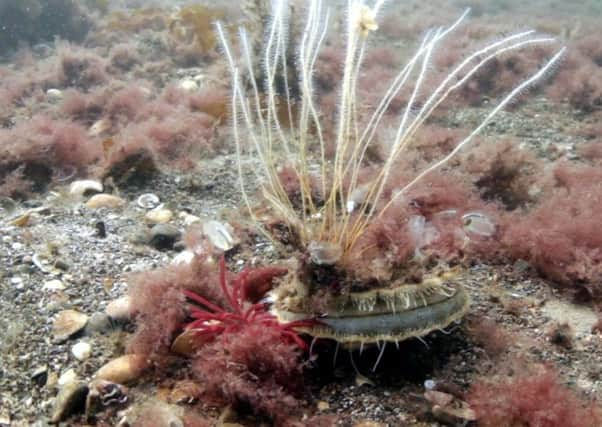Ilona Amos: Sensitive sites need protected if we want plenty more fish in the sea


Like most of the local community, I have enjoyed what the great blue (or steely grey) yonder has to offer. I’ve done my share of sailing and kayaking, been on numerous wildlife cruises and tried my very amateur hand at fishing. I’ve even been known to dip a toe in the water on occasion.
For me – and what must be eleventy-billion others, if the difficulty in getting a table in any of the local eateries is anything to go by – Plockton is synonymous with top-quality local seafood. This is because its coastal waters are hugely rich in marine life, with many rare and threatened species found in the vicinity.
Advertisement
Hide AdAdvertisement
Hide AdOne of these is a brightly coloured little mollusc that spends its time completely hidden from even the most intrepid underwater explorers, tucked inside a nest made out of shells, stones and other stuff it finds lying about. It may not be well known but the flame shell, or Limaria hians, has an important role to play in the health of the local marine environment –and the community.
Thousands, and in some cases millions, of nests can merge together to become a dense bed or reef, the flame shell equivalent of a city. This provides vital feeding grounds for young fish and shellfish. The densest reefs are found off Scotland’s west coast. What is thought to be the world’s largest was recently discovered just a few miles from Plockton, in Loch Alsh.
Unfortunately flame shell reefs, which are recognised as a priority marine feature, are very vulnerable to mechanical disturbance and extensive beds are now rare.
So it’s with great dismay that I hear an important area of the seabed in Loch Carron, just across the water, has been decimated by the activities of a single fishing boat. Just two days of dredging has left a trail of devastation and a fragile flame shell reef ripped apart.
But the worst part is this lone vessel was not doing anything wrong. The crew’s actions were perfectly legal. And it’s probably surprising it didn’t happen sooner – it’s thought to have been the first time in more than a decade that a dredger has worked in the area.
I don’t blame the fishermen themselves. If we want to look after both the planet and our rural communities we need to make sure inshore fishing is sustainable and only less destructive methods such as creeling and hand-diving are permitted around sensitive sites.
Fishing is crucial to many west coast communities. But just a small level of activity by a scallop dredger has caused damage that could take 10 years or more to repair. The SNP’s last election manifesto promised an inshore fisheries bill, and incidents like this prove why it is needed. New regulations are long overdue.
Nick Underdown, from the sustainable seafood campaign group Open Seas, says he and others have been calling on the Scottish Government to better manage trawling and dredging for decades. “Regulation is piecemeal”, he says. “This area is protected for half of the year, but just two tows can do damage that will take decades to recover.”
Advertisement
Hide AdAdvertisement
Hide AdStudies have shown there are benefits to biodiversity and fish stocks from restricting damaging methods such as trawling and dredging in certain areas. Managing our seas well will not only help protect the marine environment, it could guarantee future generations will benefit from a healthy fishing industry and the wonderful seafood we currently take for granted.